Sitting pretty: a show of Pierre Paulin's chairs goes on display at Centre Pompidou
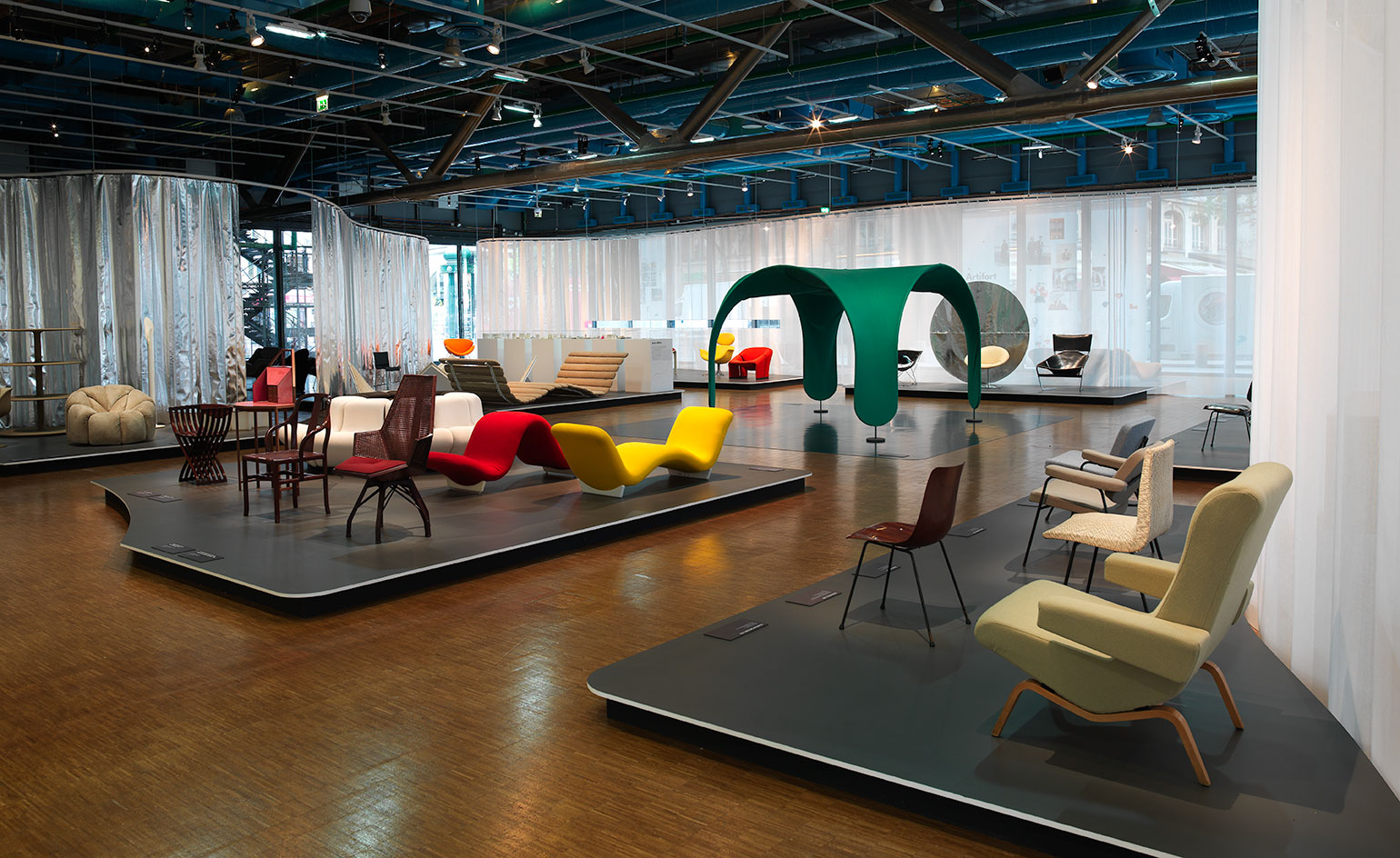
Museum shows don’t usually begin by encouraging people to take a seat. But when the exhibition is dedicated to Pierre Paulin, whose 'Mushroom', 'Orange Slice', 'Tongue' and 'Ribbon' chairs have become part of the contemporary furniture canon, there’s something to be said for acquainting yourself with his sinuous 'Amphis' banquette (conceived for Expo Osaka in 1970). Just don’t settle in for too long; there’s plenty to see.
The Centre Pompidou’s first retrospective of the late French designer (who died in 2009) presents more than 100 Paulin pieces, including a collection of playful sketches donated by his family last year, maquettes of an unrealised residential concept for Herman Miller and singular models such as the 'Déclive' that were never put into large-scale production.
The show flows easily and without pretension, chronologically displaying his contributions for Thonet, Disderot and Artifort, before arriving at a biographical video projected on a double-sided screen and surrounded by re-editions of the Artifort seating by Ligne Roset. It was here that curator Cloé Pitiot spoke with Wallpaper* about the designer’s talent for combining the dynamism of form and colour with the essential quality of comfort.
‘You get the sense he’s a rigid man but, in fact, there’s so much poetry and suppleness in his pieces,’ she explains. ‘And there was a lot of humour to his approach too.’ Underlying his work, however, was ‘logic’, she adds. Indeed, the frame of 'F560', better known as the 'Mushroom' chair, reveals how beneath the biomorphic padded shape and stretchy fabric is a skeleton consisting of little more than three well-positioned metal rings.
Pitiot, who curated the Centre Pompidou’s exhibition on Eileen Gray in 2013, notes how she wanted this endeavour to feel inspired yet accessible. Hence Laurence Fontaine’s nod-to-Mod scenography, which features curvy curtains created by Petra Blaisse that both block and filter in light. Banners collaged with vintage advertising evoke the swish, Mad Men-esque lifestyle reinforced by the furniture.
This freshness and modernity likely encouraged the collaboration between Paulin and the Mobilier National, the government agency overseeing the French national furniture collection, and its design division ARC (Atelier de Recherche et de Création) on the refurbishment of the Louvre’s Grande Galerie in 1969, which in turn prompted President Georges Pompidou and his wife, Claude, to enlist his services in remodeling the private apartment of the Élysée Palace. Here, an archival video details no shortage of Paulin’s design considerations. Among them, he opted to line the soundproof walls with polyester, believing they wouldn’t retain food odours as strongly as natural fabric.
While visitors may not be able to test the five-legged, rattan swivel chair Paulin conceived for François Mitterrand, they will observe how he constantly challenged himself to reinterpret his own self-contained architectures without over-intellectualising the concepts. The 'Tongue' seat, for instance, cleverly gave way to the 'Face-à-Face' and 'Dos-à-Dos'. As Pitiot sums up, ’The designs don't age. I think he succeeded because he created seating that makes you feel good. You want to stay in them a while. Everyone who comes finds a comfortable space here.'
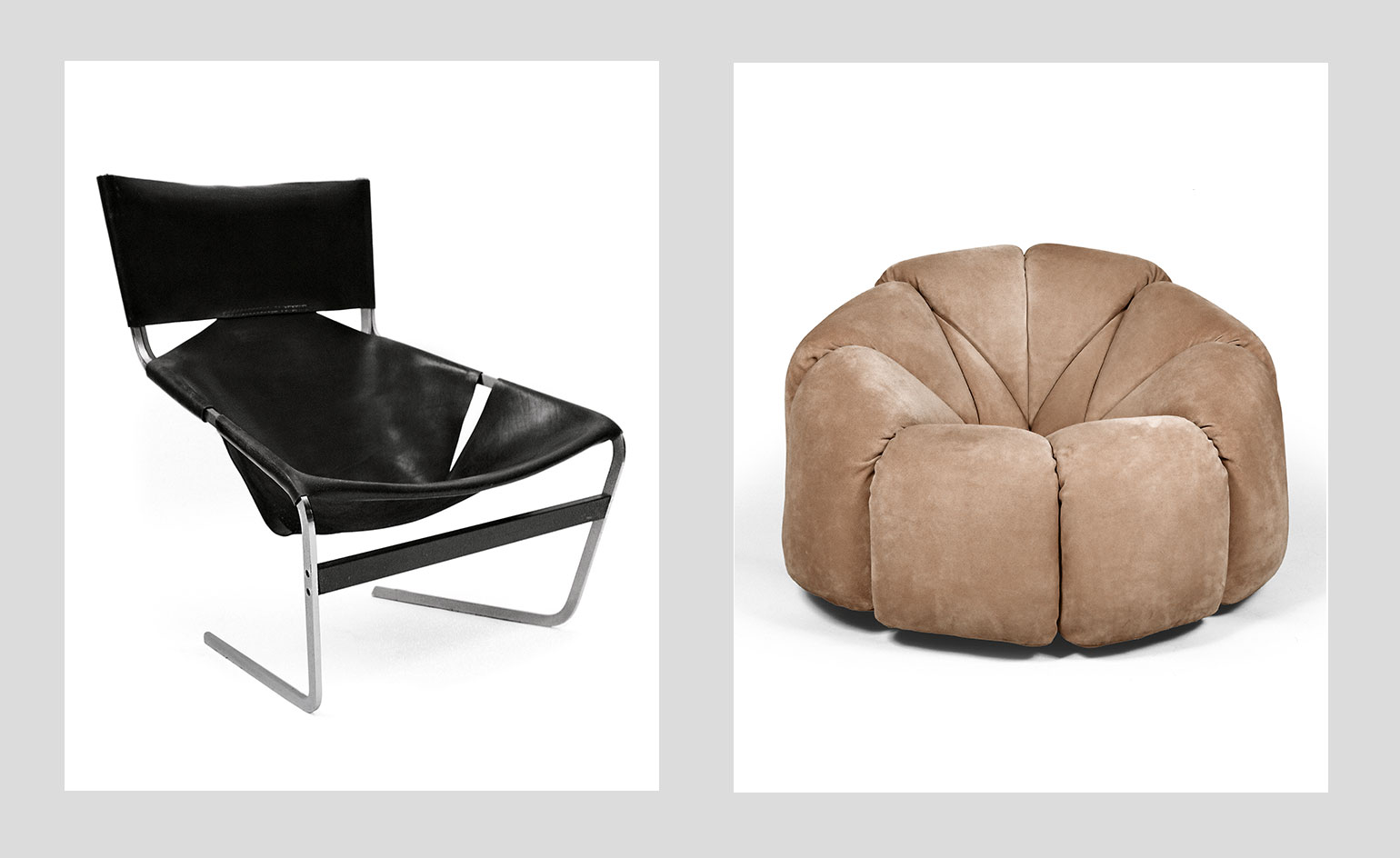
Paulin's 'Mushroom', 'Orange Slice', 'Tongue' and 'Ribbon' chairs have become part of the contemporary furniture canon. Pictured left: Fauteuil F444 chair, 1963. Pictured right: Fauteuil du salon des Tableaux.
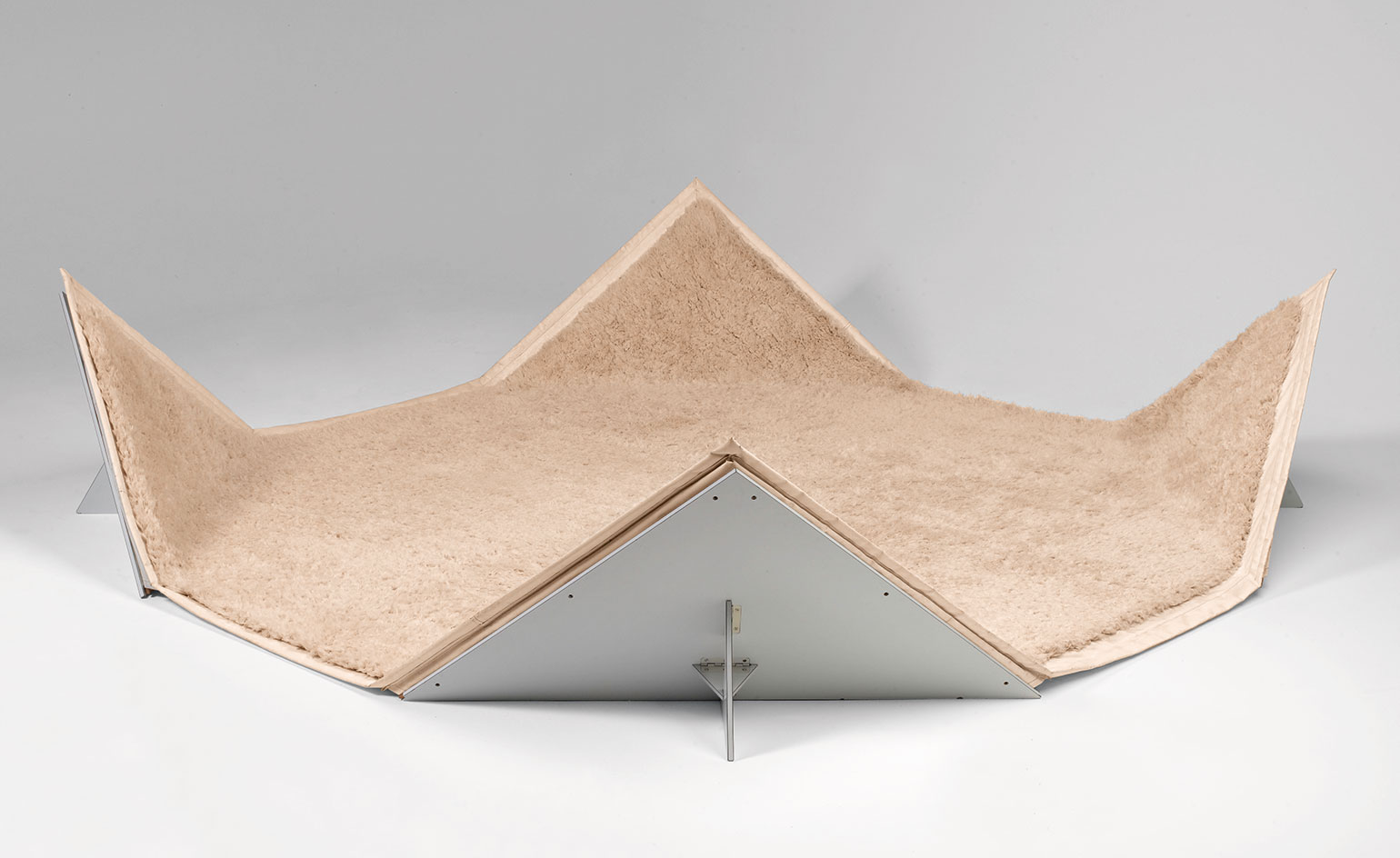
The Pompidou exhibition also includes a collection of playful sketches, maquettes of an unrealised residential concept for Herman Miller and singular models such as the 'Déclive' that were never put into large-scale production. Pictured: Tapis Siage, 1980
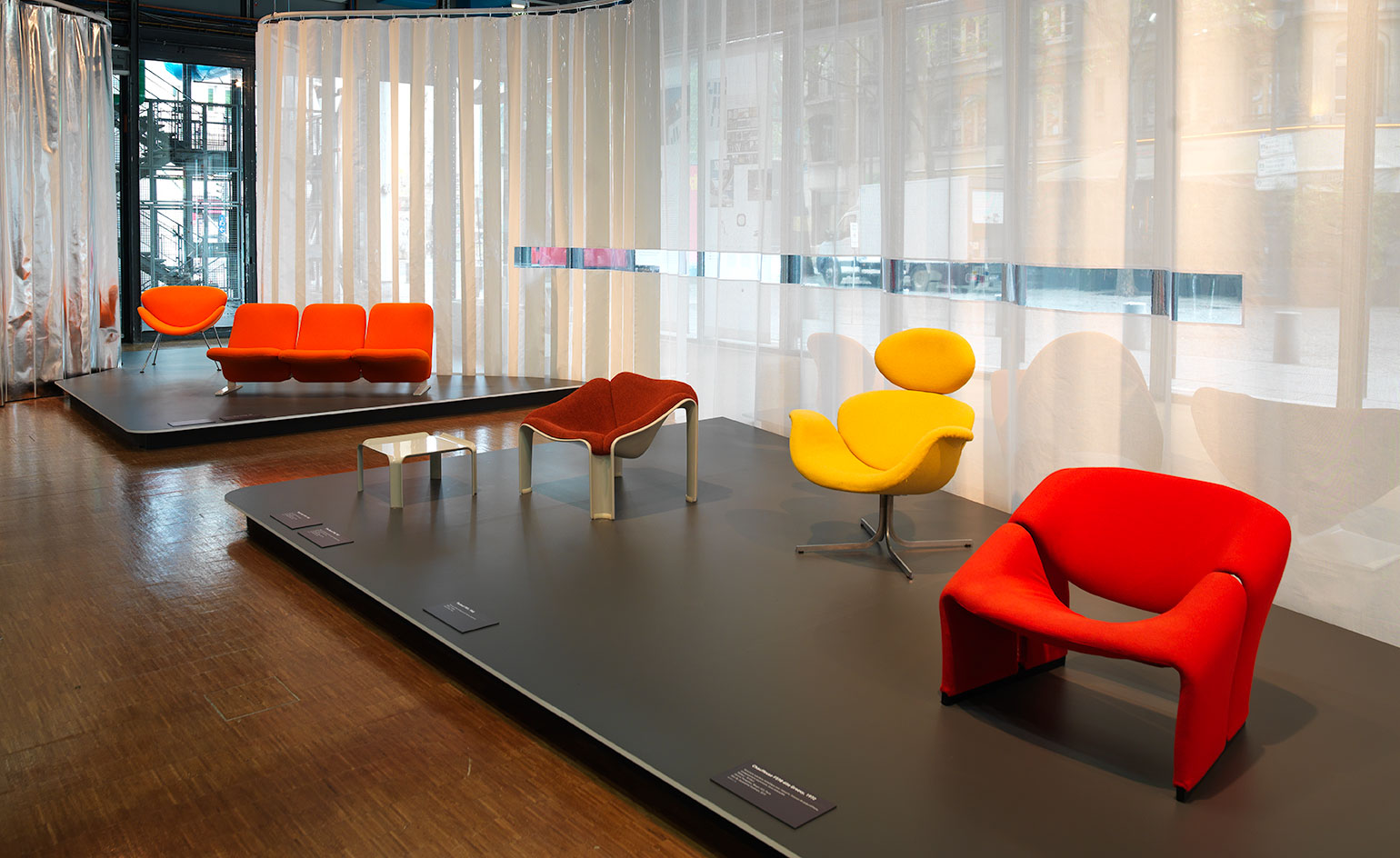
The show flows easily and without pretension, chronologically displaying his contributions for Thonet, Disderot and Artifort.
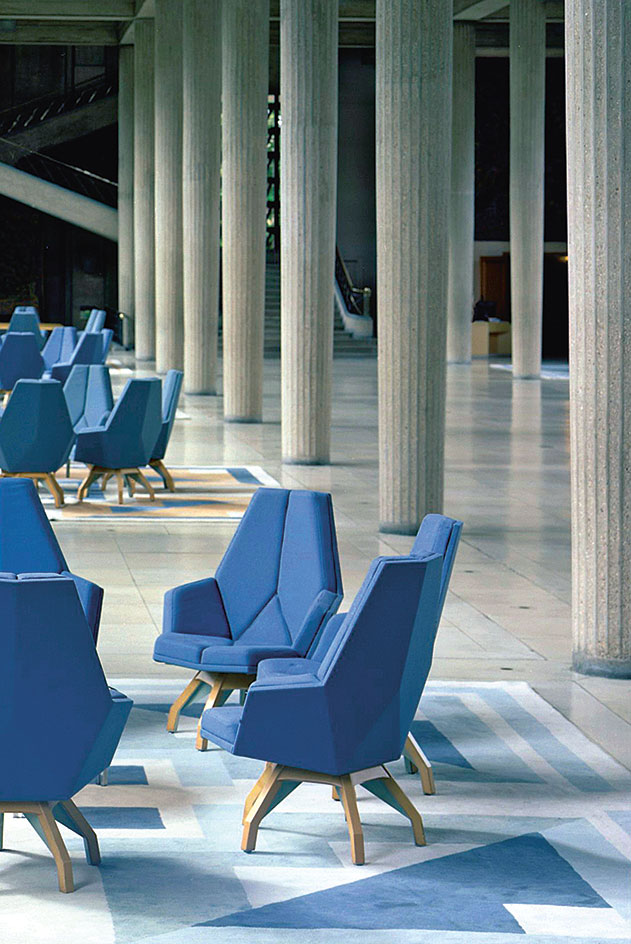
‘You get the sense he’s a rigid man but, in fact, there’s so much poetry and suppleness in his pieces,’ explains curator Cloé Pitiot. Pictured: interior from Palais d'Inéa, Paris, 1985.
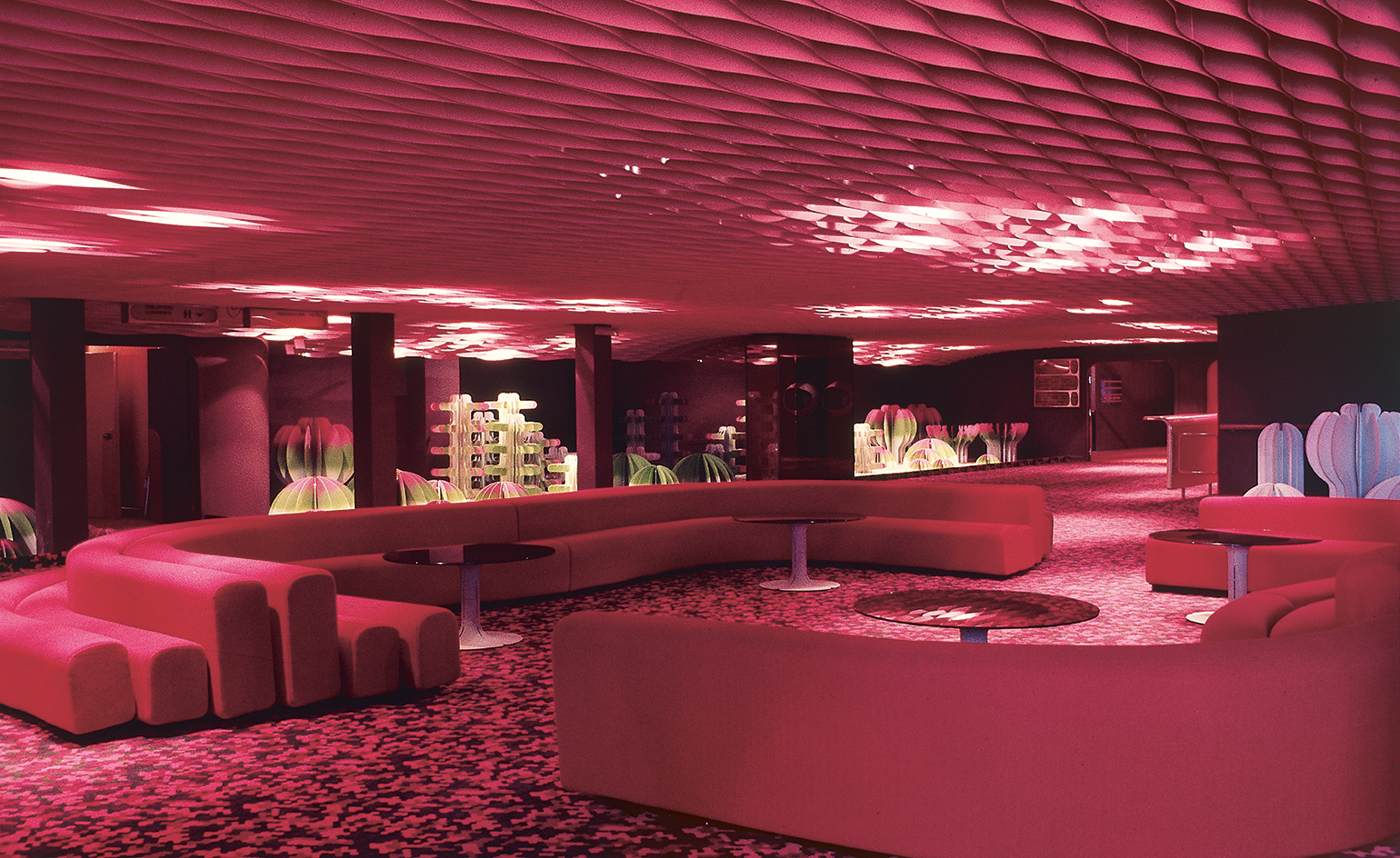
Paulin’s talent for combining the dynamism of form and colour with the essential quality of comfort is clear to see. Pictured: Paulin sofa designs in Hotel Nikko, Osaka, 1976.
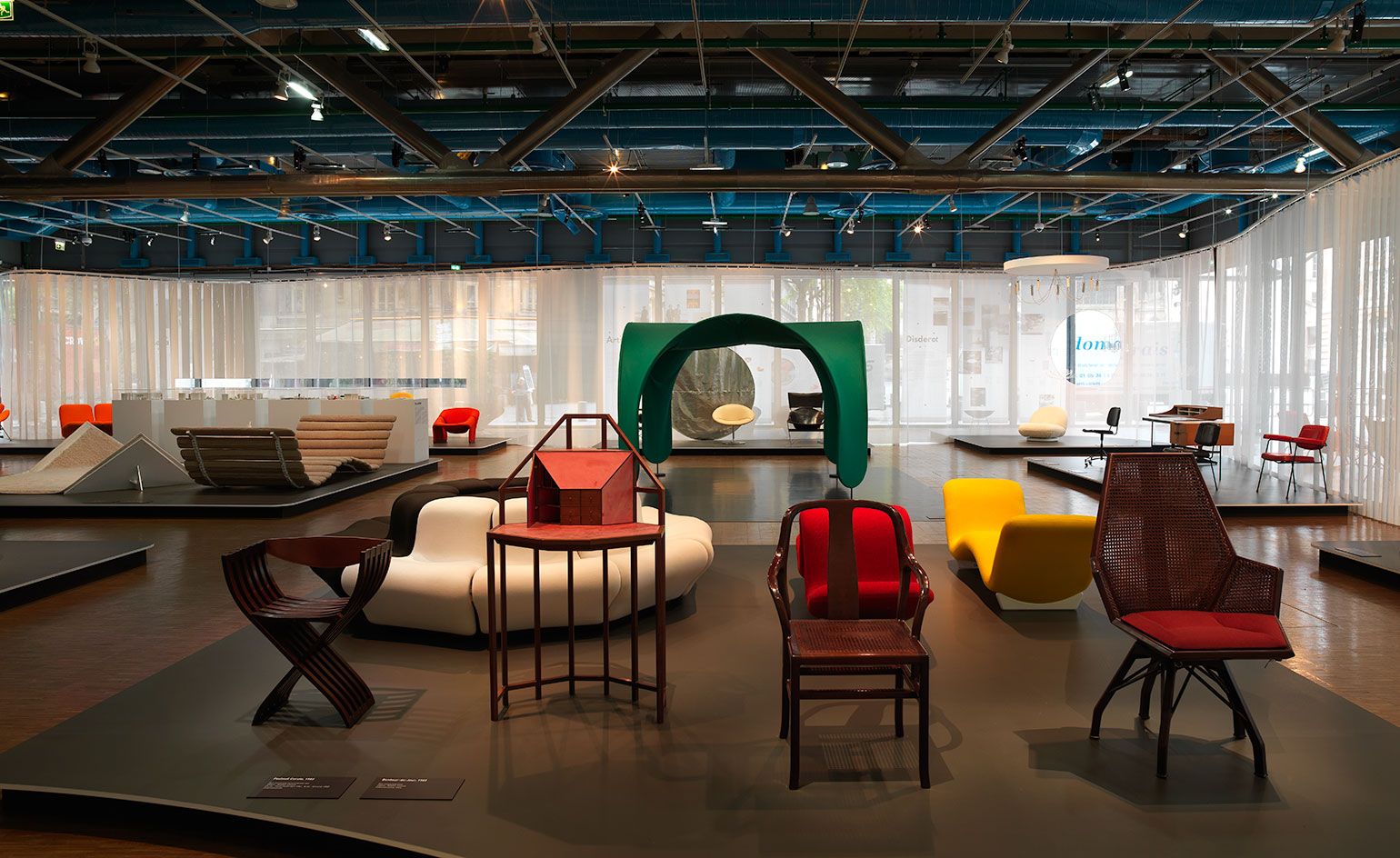
A biographical video surrounded by re-editions of the Artifort seating by Ligne Roset also feature in the exhibition.
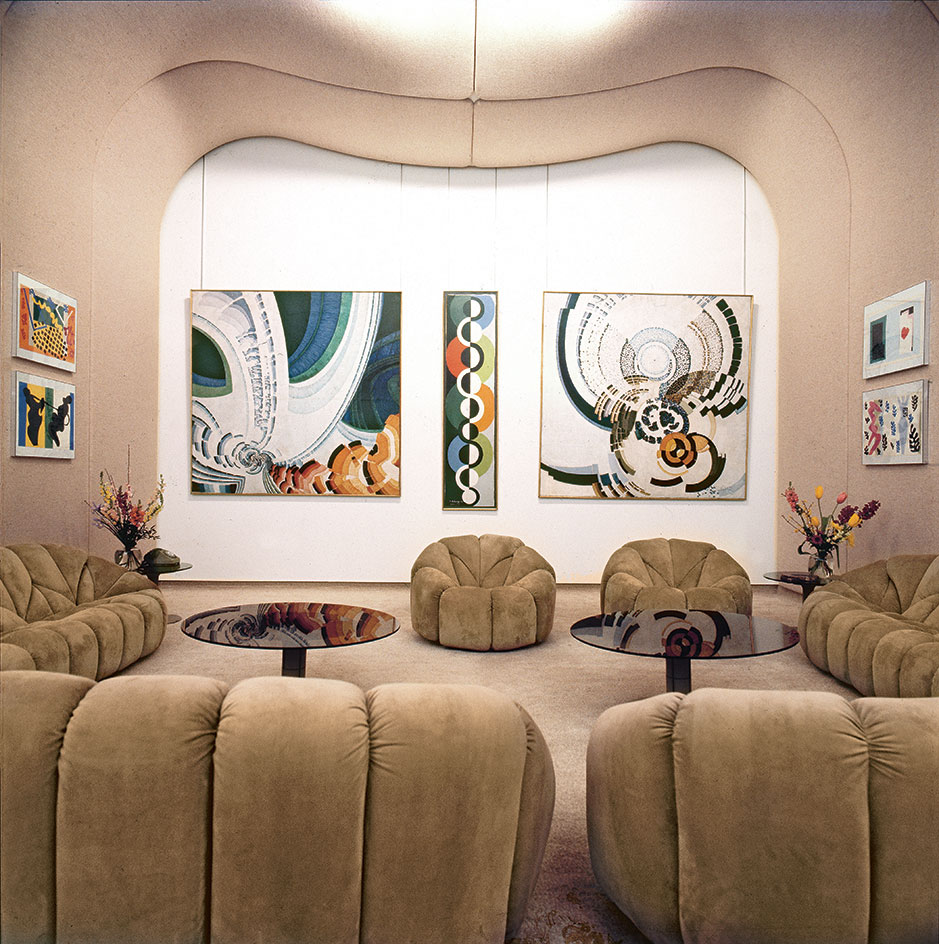
President Georges Pompidou and his wife, Claude, enlisted Paulin's services in remodeling the private apartment of the Élysée Palace. Pictured: tables at the Élysée Palace, 1971.
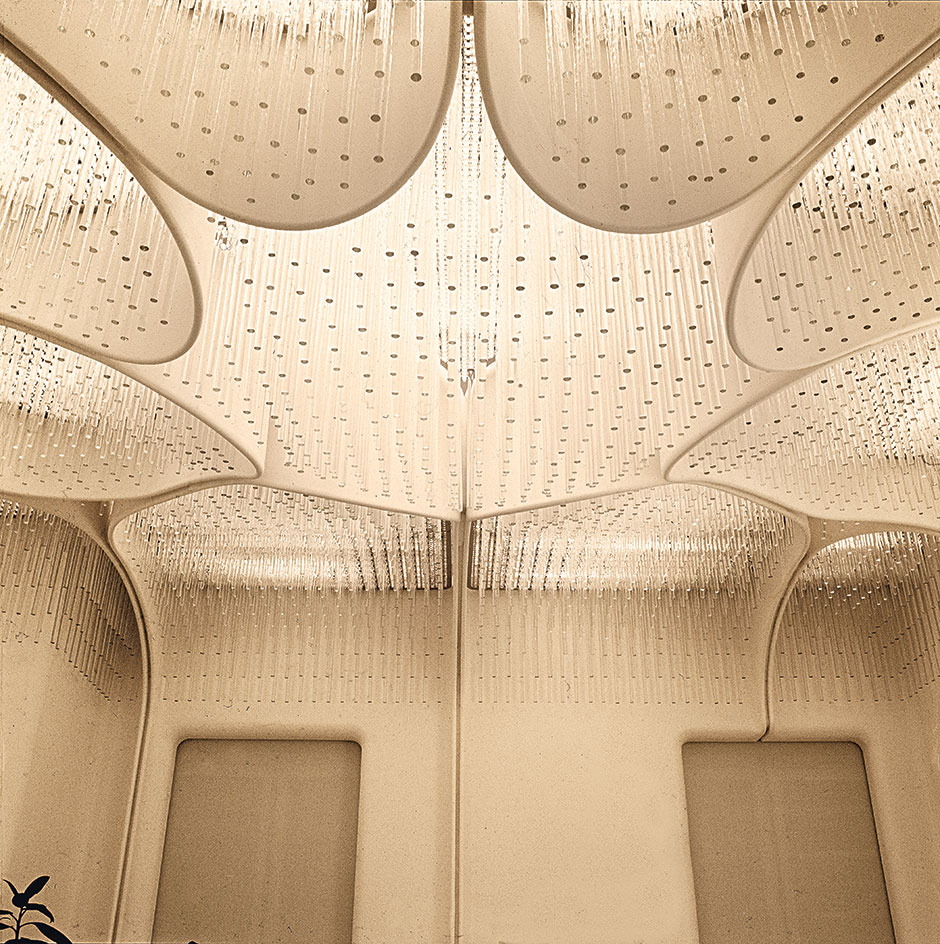
There, Paulin opted to line the soundproof walls with polyester, believing they wouldn’t retain food odours as strongly as natural fabric. Pictured: ceiling of the dining room at the Élysée Palace, 1971.
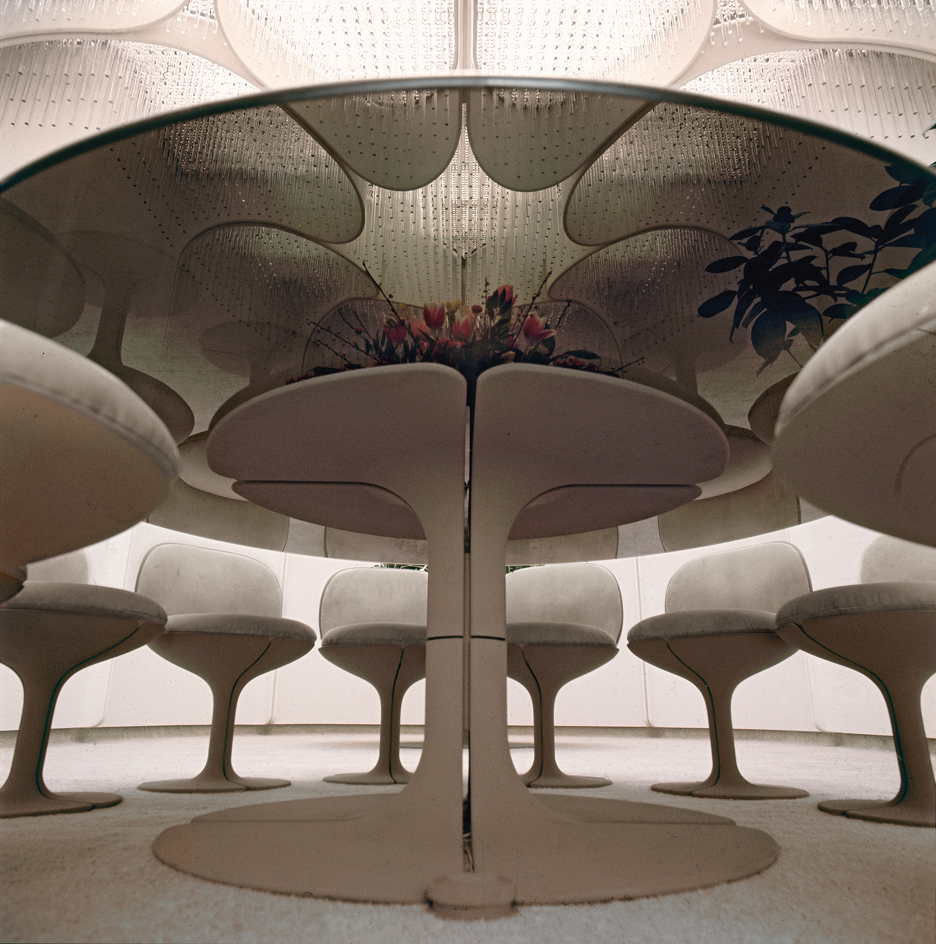
Pictured: smoking room at the Élysée Palace, 1971.
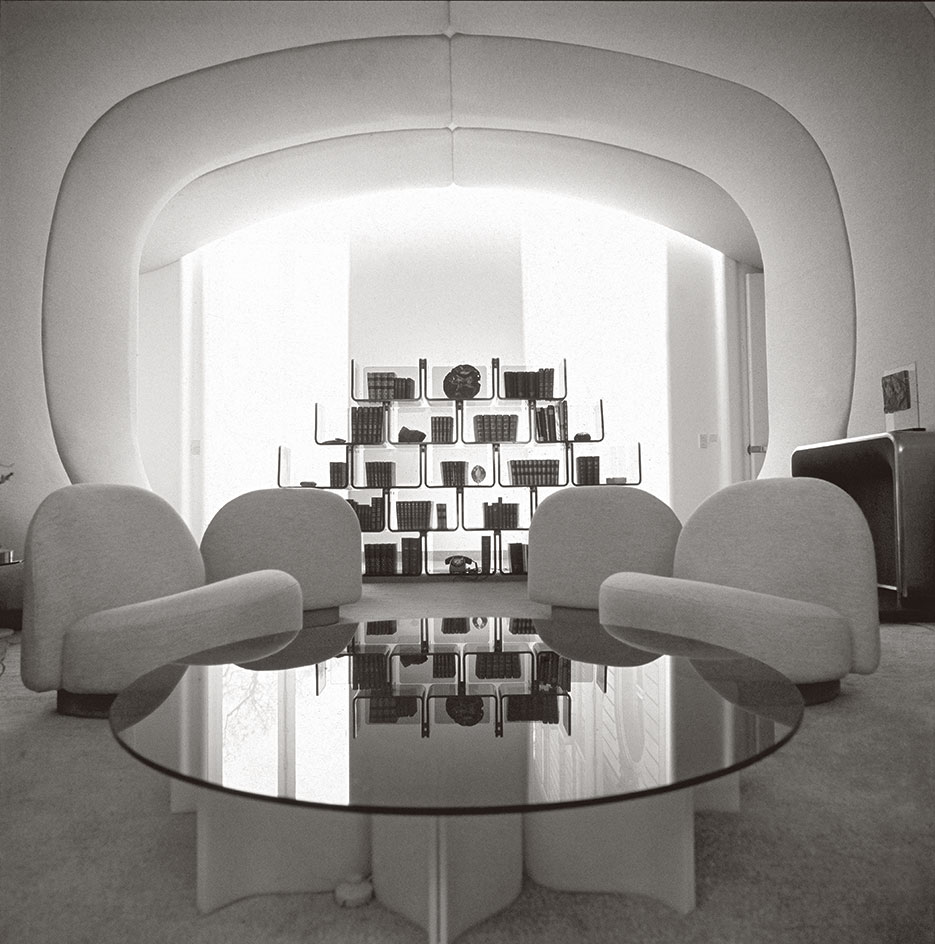
Pictured: smoking room at the Élysée Palace, 1971.
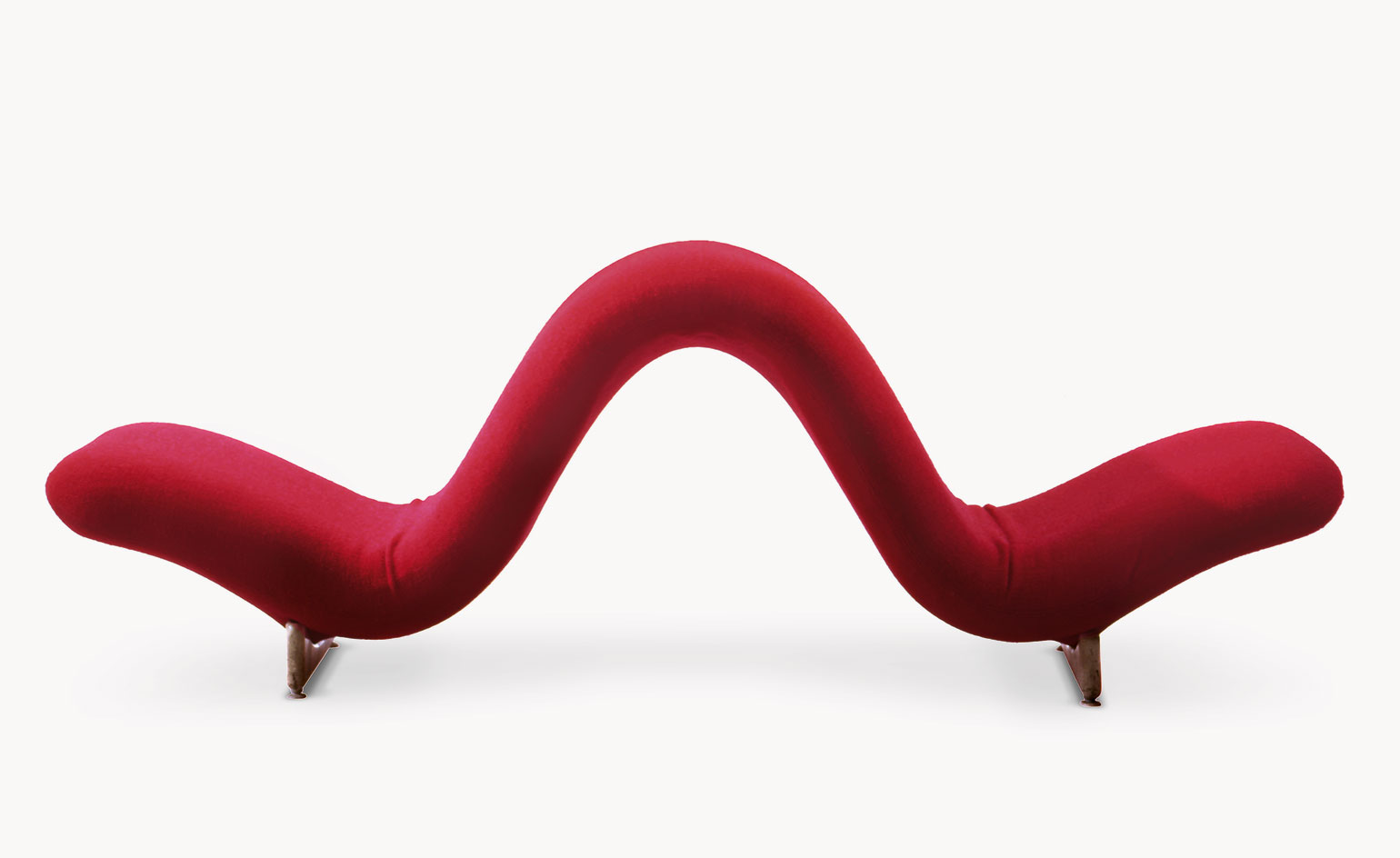
The 'Tongue' seat, for instance, cleverly gave way to the 'Face-à-Face' and 'Dos-à-Dos', pictured.
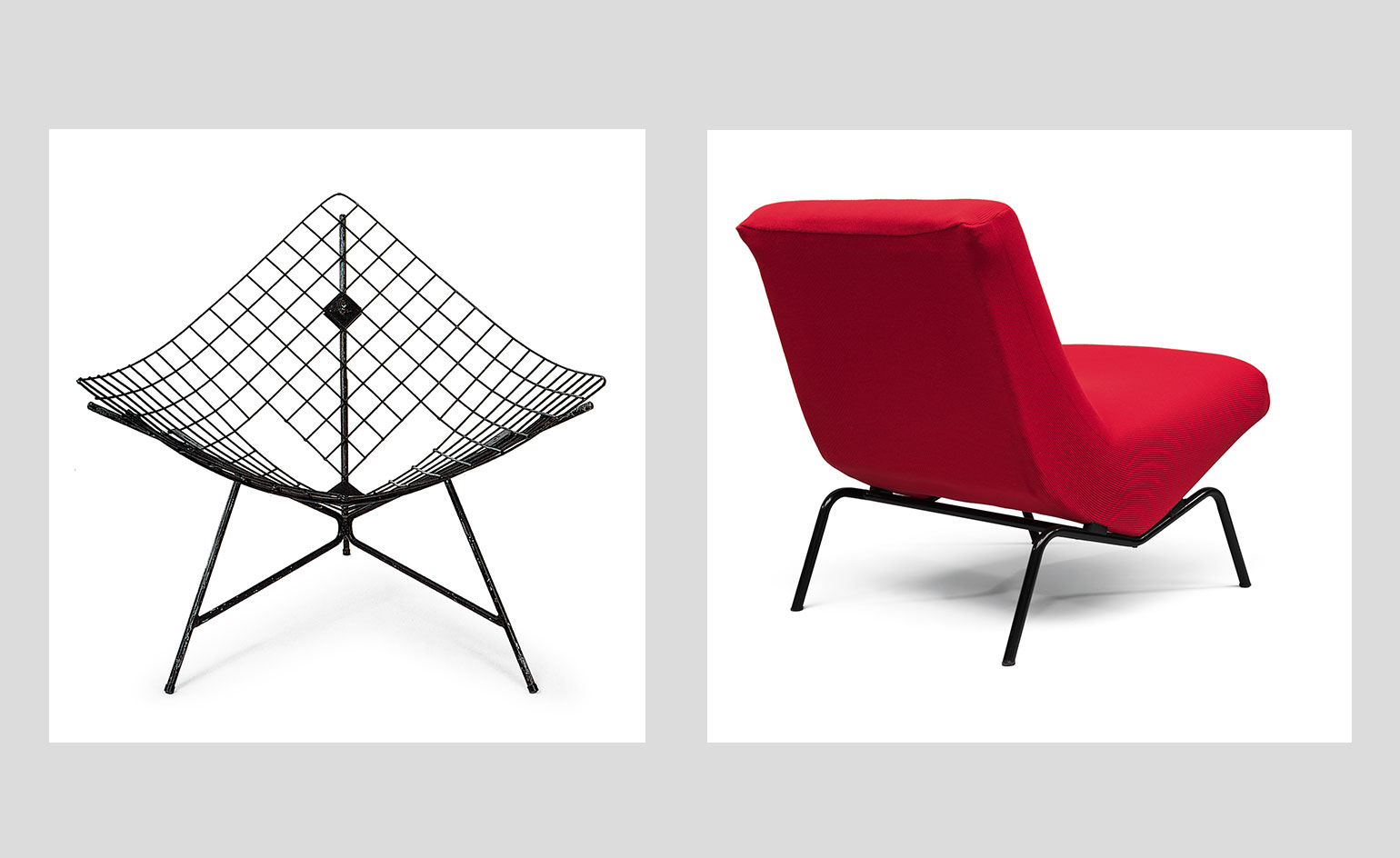
Pitiot sums up, ’The designs don't age. I think he succeeded because he created seating that makes you feel good. You want to stay in them a while. Everyone who comes finds a comfortable space here.' Pictured left: Fauteuil CM170 dit Tripode cage, 1955.
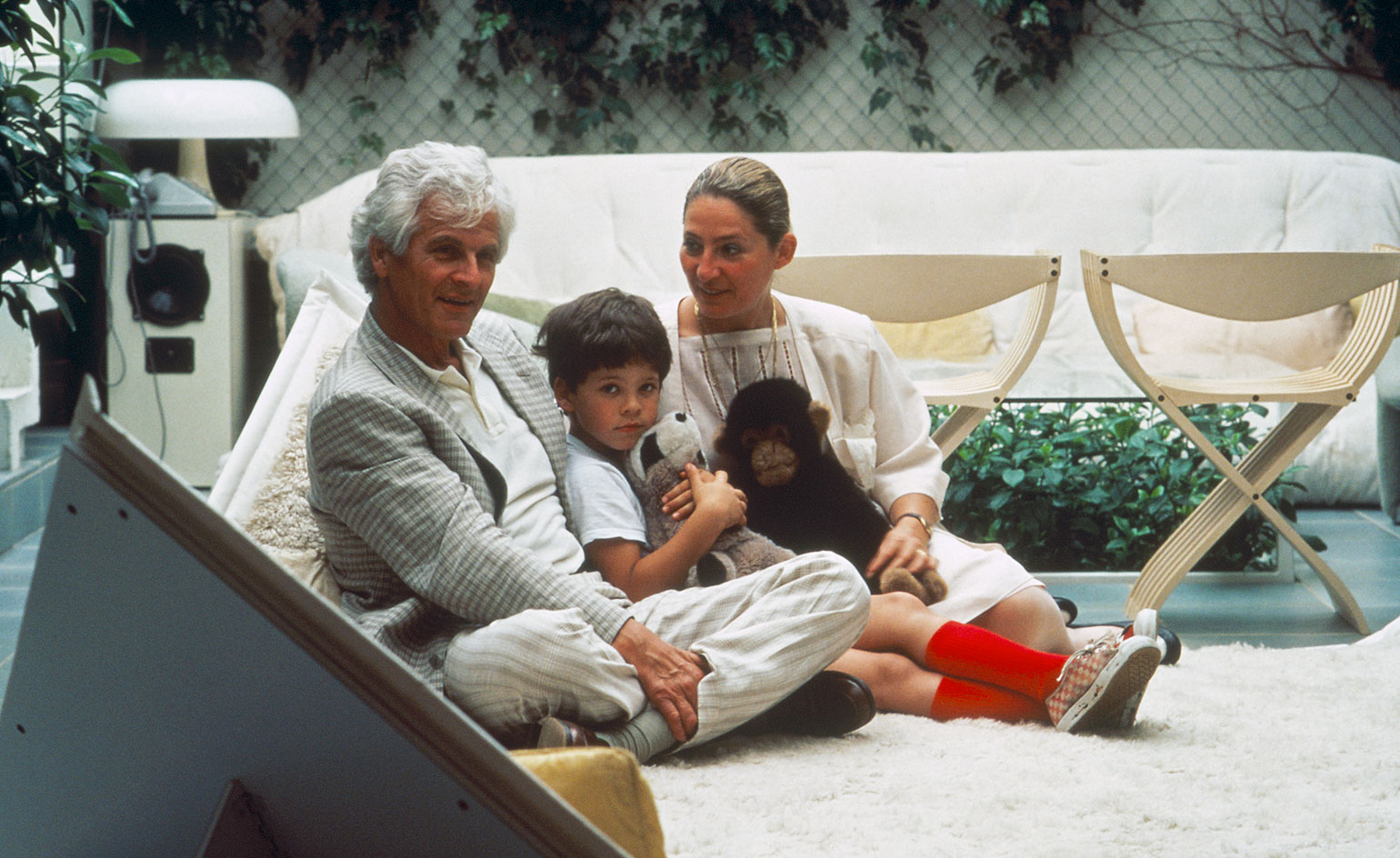
Pictured: Pierre, Benjamin and Maïa Paulin in their Parisian apartment.
INFORMATION
’Ouverture: Pierre Paulin’ is on view until 22 August. For more information, visit the Centre Pompidou’s website
ADDRESS
Centre Pompidou
Place Georges-Pompidou
75004 Paris
Wallpaper* Newsletter
Receive our daily digest of inspiration, escapism and design stories from around the world direct to your inbox.
-
 Put these emerging artists on your radar
Put these emerging artists on your radarThis crop of six new talents is poised to shake up the art world. Get to know them now
By Tianna Williams
-
 Dining at Pyrá feels like a Mediterranean kiss on both cheeks
Dining at Pyrá feels like a Mediterranean kiss on both cheeksDesigned by House of Dré, this Lonsdale Road addition dishes up an enticing fusion of Greek and Spanish cooking
By Sofia de la Cruz
-
 Creased, crumpled: S/S 2025 menswear is about clothes that have ‘lived a life’
Creased, crumpled: S/S 2025 menswear is about clothes that have ‘lived a life’The S/S 2025 menswear collections see designers embrace the creased and the crumpled, conjuring a mood of laidback languor that ran through the season – captured here by photographer Steve Harnacke and stylist Nicola Neri for Wallpaper*
By Jack Moss
-
 Maison et Objet: Wallpaper's 15 highlights from France's leading homes and interiors fair
Maison et Objet: Wallpaper's 15 highlights from France's leading homes and interiors fairThe design year has officially begun with the launch of Maison et Objet. Our on-the-ground correspondent reports on its standout moments
By Anna Sansom
-
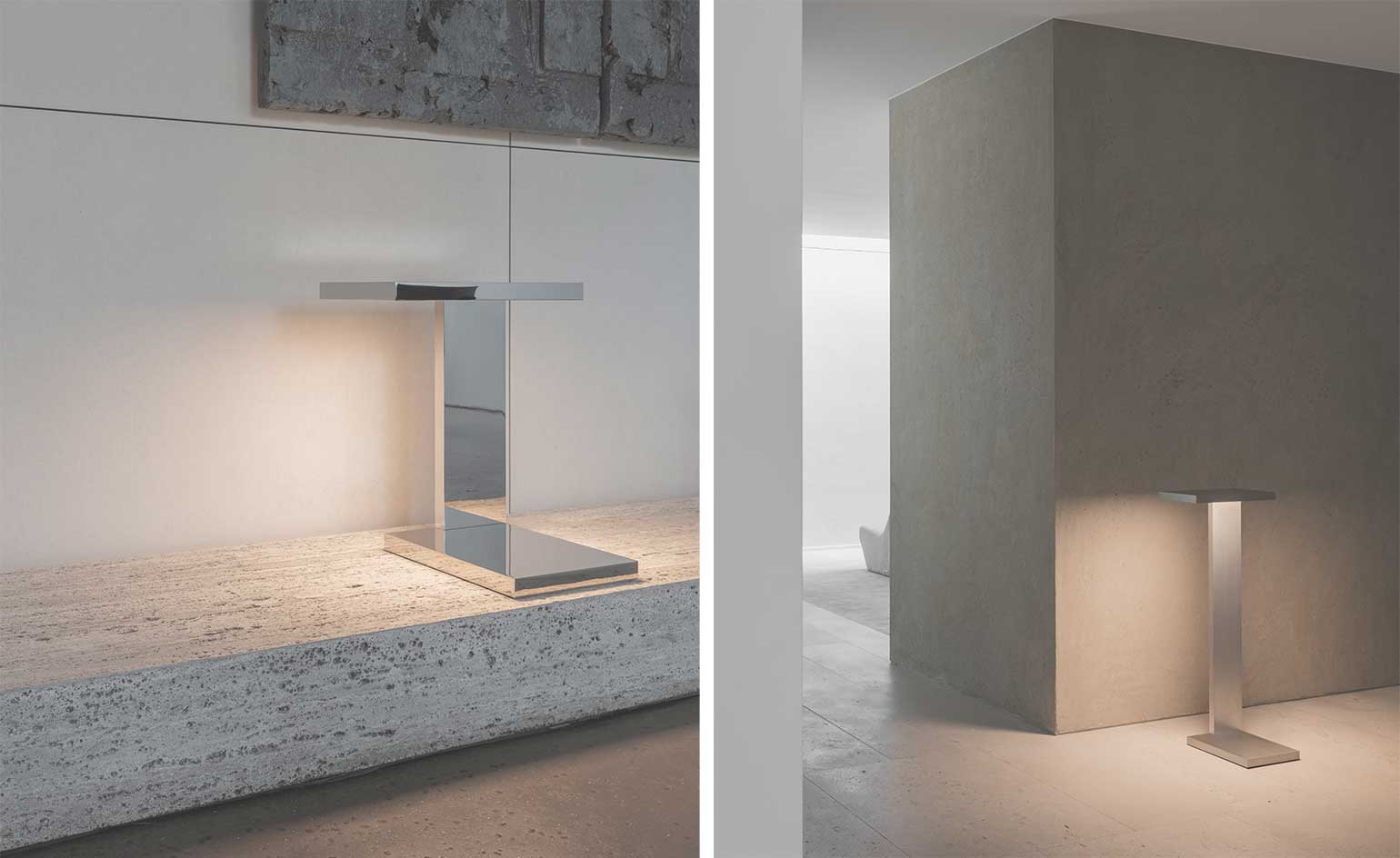 Ozone and Dominique Perrault Architecture create a series of monumental aluminium lamps
Ozone and Dominique Perrault Architecture create a series of monumental aluminium lampsOzone worked with Dominique Perrault and his partner Gaëlle Lauriot-Prévost to present the ‘Furtiv’ collection, featuring a series of aluminium lamps inspired by the architect's Bibliothèque François-Mitterrand in the 1990s
By Amy Serafin
-
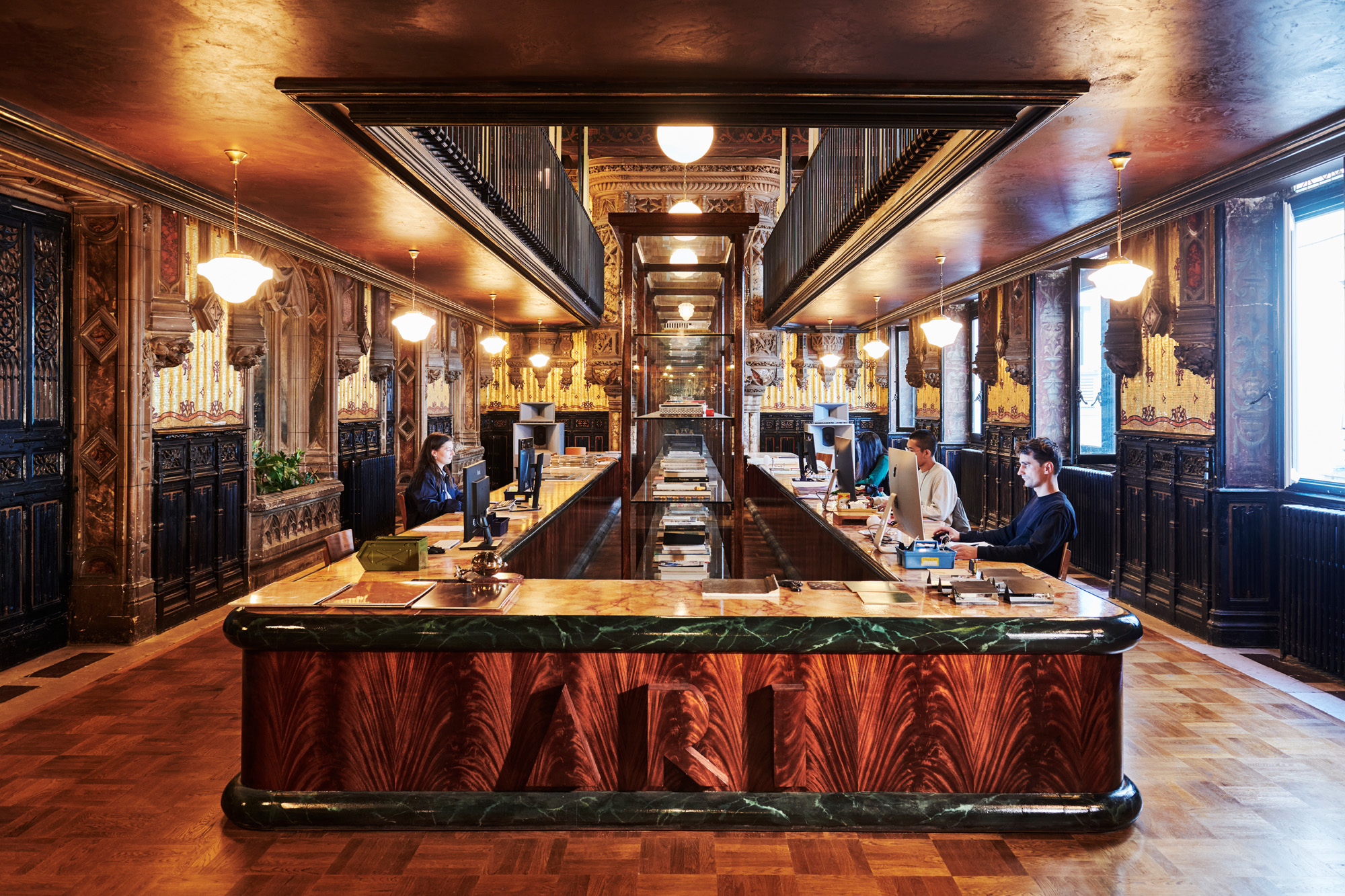 Is this the most beautiful office in the world?
Is this the most beautiful office in the world?Parisian creative agency Art Recherche Industrie’s new HQ translates a 19th-century landmark into a chic open-plan office worth leaving home for
By Rosa Bertoli
-
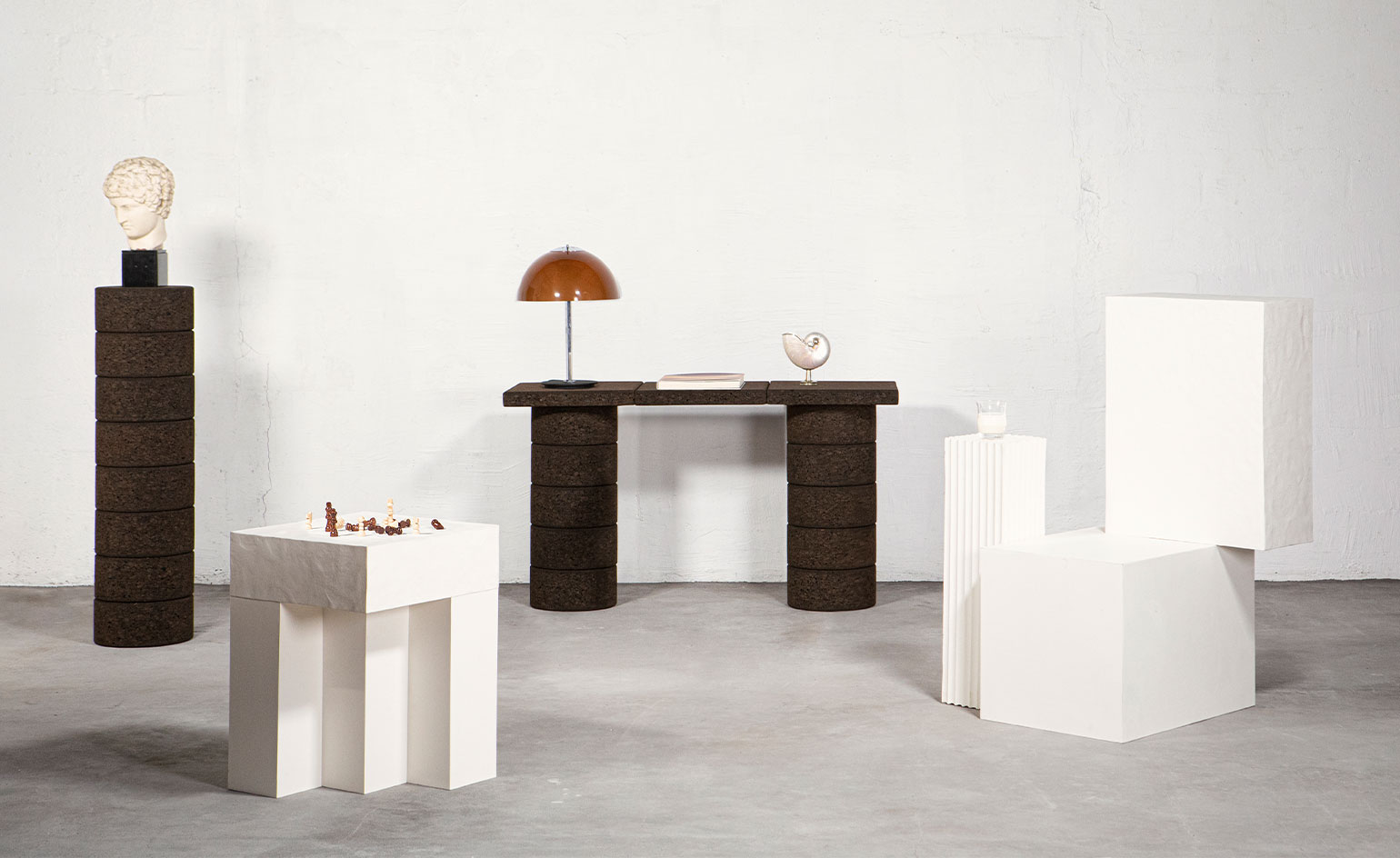 Mono Editions launches furniture in cork and paper pulp
Mono Editions launches furniture in cork and paper pulpLaunched with a pop-up in Paris (23-27 March 2022), Mono Edition presents modular designs by architects, crafted from sustainable single materials
By Rosa Bertoli
-
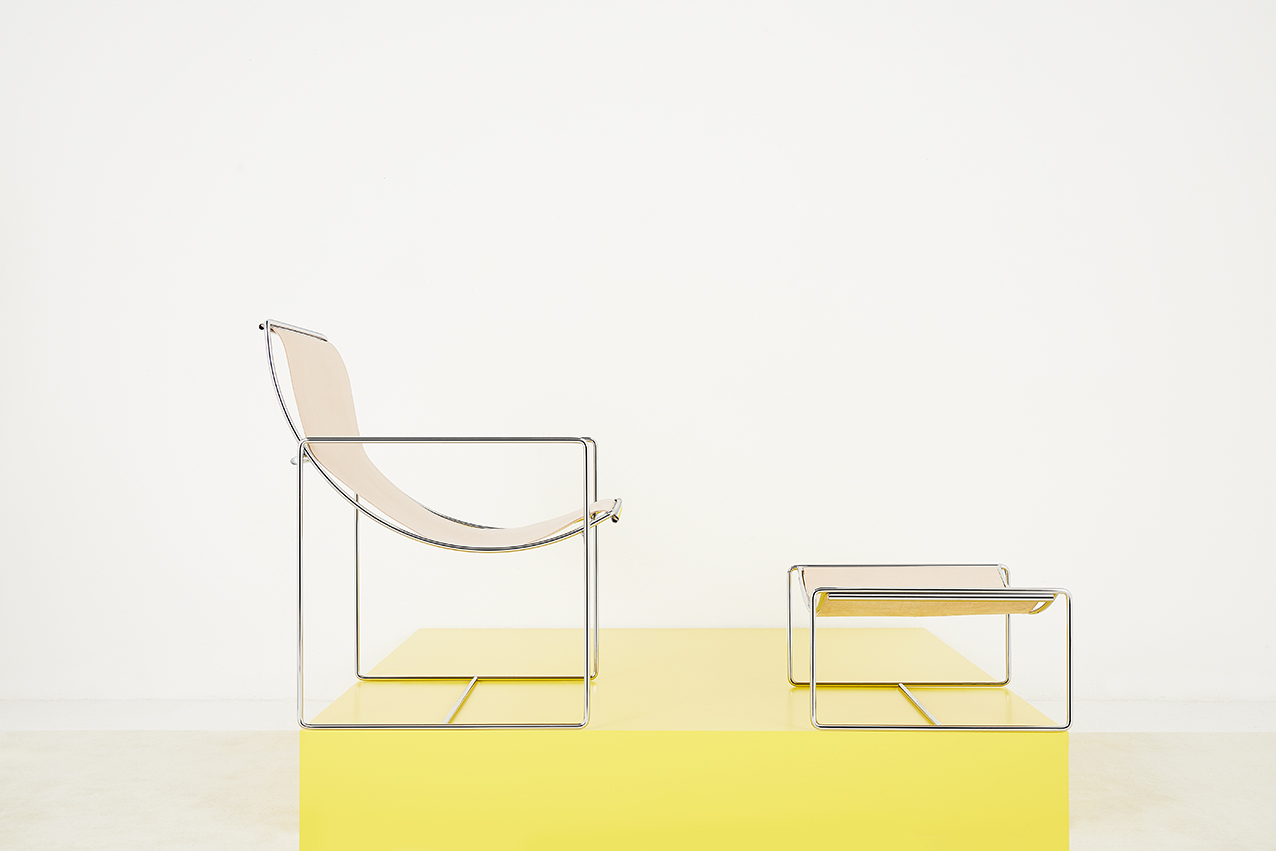 Odile Mir’s granddaughter is reissuing her 1970s French furniture
Odile Mir’s granddaughter is reissuing her 1970s French furnitureParisian designer Léonie Alma Mason launches LOMM Editions – a new brand presenting 1970s furniture designs created by her grandmother, nonagenarian artist Odile Mir
By Rosa Bertoli
-
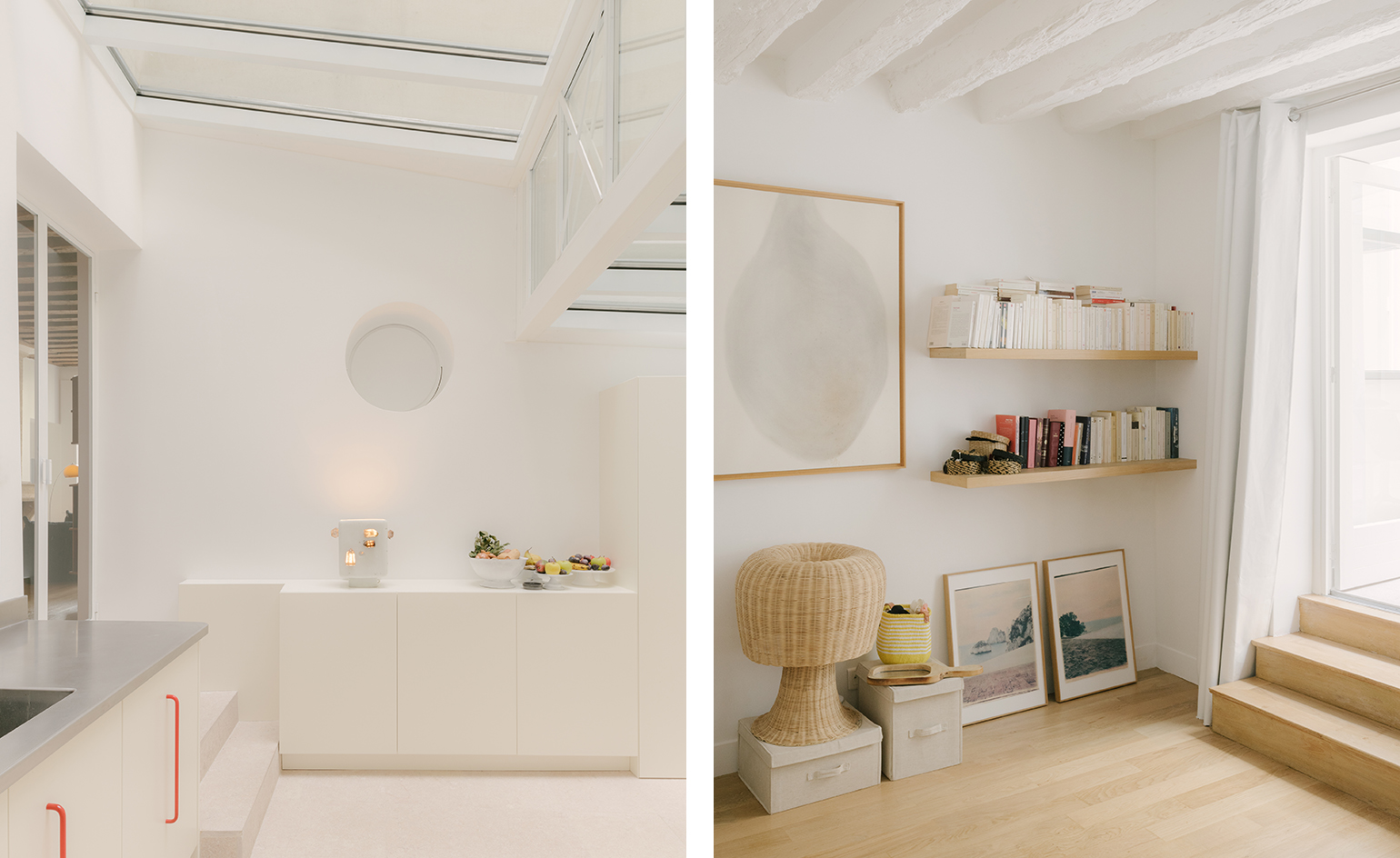 Historic Paris apartment gets wrapped in soft minimalism
Historic Paris apartment gets wrapped in soft minimalismArchitect Saba Ghorbanalinejad reworks the historic architecture of this Le Marais apartment for the 21st century
By Ellie Stathaki
-
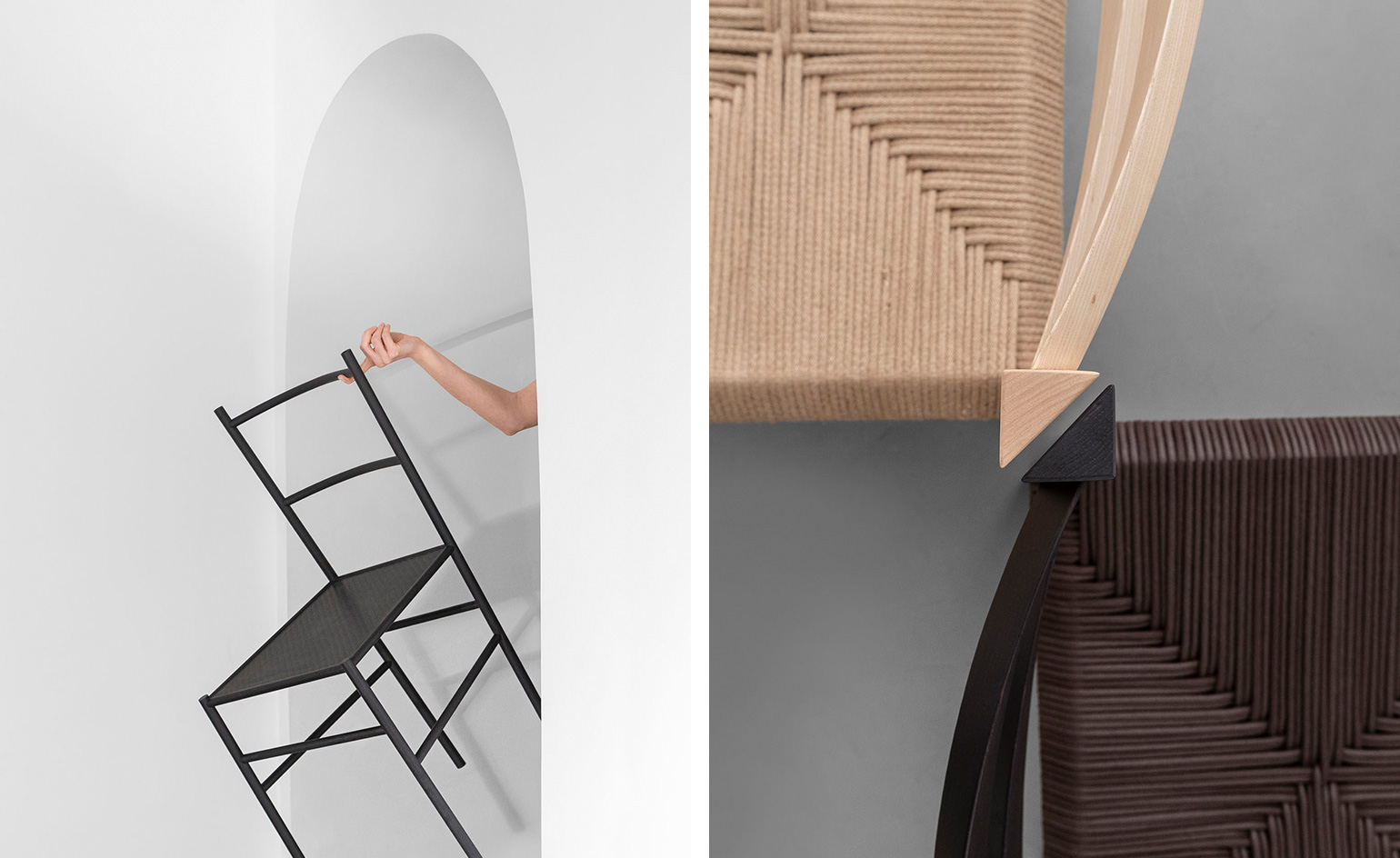 Francesco Faccin reinvents an anonymous classic chair design
Francesco Faccin reinvents an anonymous classic chair designFrancesco Faccin revises a traditional chair design for his project presented by Rome-based gallery Giustini / Stagetti
By Rosa Bertoli
-
 Pierre Jeanneret’s midcentury designs for Chandigarh get an LA audience
Pierre Jeanneret’s midcentury designs for Chandigarh get an LA audienceBy Ali Pechman